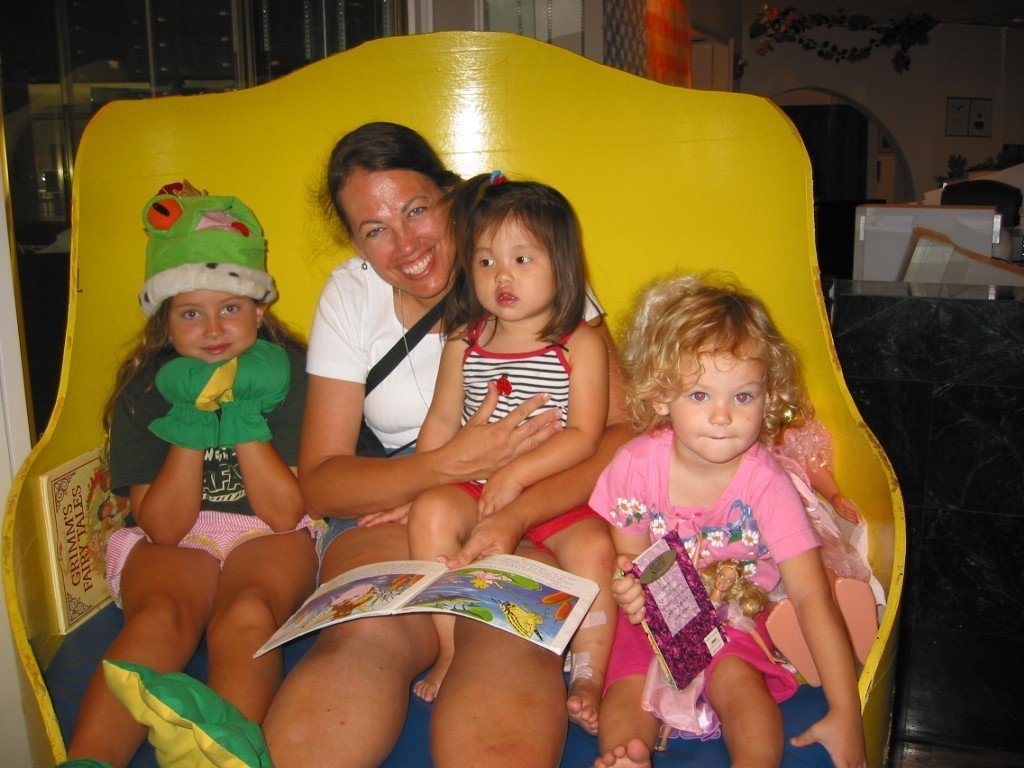
Grant-Hamilton Article
In the Hamilton article, I found the last three paragraphs on page 26 and 28 interesting. She defines the categories, which her research images can be grouped into. The groups include: interactions between people and texts, literacy in the environment, writing on the body, and reproductions of documents. I was a bit lost when I began searching for an image to study on my own. I chose an image of a woman reading to kids. Lots of interesting interactions are taking place in this image. It looks like they took this picture in the middle of reading a story and each little girl has chosen her own book. The oldest girl has writing on her shirt also. It seems more rare for young children to wear clothing with text on it, most likely because they can’t interact with it themselves. The picture I chose can be studied similarly to the way Hamilton defines notions like setting, participants, and practices. This image of children reading with an adult is a common practice. These girls interact with different books and are being entertained. The image seems like a traditional form of people interacting with text. One part of this picture that interests me is the book choices from each child. The open book clearly is illustration heavy, while the older child chooses a wordier book, Grimm’s Fairy Tales. The little girl dressed in all pink chooses a pink book. For her it seems natural to participate with a book that clearly reflects her identity. Hamilton’s process of analyzing images and deciding certain things about literacy practices are more easily understood through pages 26 and 28.



 Website:
Website: